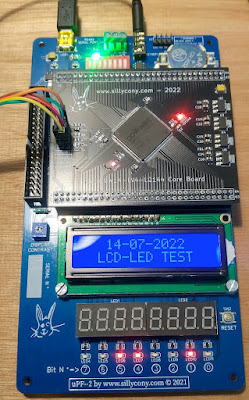Unusual article on my blog, it's true, but as I enjoy troubleshooting well-built devices that seem to be repairable, I'm sharing it here.
In fact, because the media space on the subject of sustainable development is inversely proportional to the possibilities of real reparations. The main objective being display rather than reality, particularly in France which excels in the art of lying! So, a kind of denunciation here...
I have had this excellent coffee grinder for more than ten years:
Over the past few days, a pungent-smelling puff of smoke has escaped from the engine compartment.
Dismantling the device is very easy. I removed the electric motor and could see that the smell was indeed coming from this motor. I checked the 'coals' to see if they were not worn. They were, but there was enough left to keep the engine running smoothly.
I therefore concluded that there must be a problem with the winding. I have not tried to start this engine again. When it has smoked, it is better to replace it, it is much less risky.
Here is the motor :
Nothing special, it is a motor that operates under 230V DC. I thought it was not going to be very difficult to find its new equivalent. In fact, I was wrong. It was not easy to find a new model!
KitchenAid's after-sales service for Europe is located in Belgium. So I called this service, and on the phone, I had a lady who told me that the coffee grinder model was so old, that she couldn't find the motor reference.
The only thing she could do was give me the phone number of a French after-sales service company affiliated with KitchenAid.
I suspected that she was getting rid of the problem with diplomacy. I still called this company, which was of course, unable to help me.
Important information. I have concluded from calling this service company that if your KitcheAid appliance is not under warranty, the effort to find a repair solution will be non-existent.
So: the repairability of KitcheAid devices is only guaranteed for a period of two years! After this time, if the part is no longer in stock, it's dead! This is absolutely unacceptable. A period of ten years should be possible, given the quality of construction of this type of device. Mine must be approaching fifteen years, I understand, but still: two years!!!
So what to do? Thanks China!
It is not easy at all to find this type of engine reference. In fact, I ended up finding a site that presented an engine whose images corresponded exactly to the one I had to replace. Needless to say that I greatly prefer to rely on real references, but impossible on this engine. So I had to rely on the images shown and ordered the motor while mentally preparing myself for this not being the right reference.
But hey, the price of the engine plus shipping was €39.2: not very risky.
And this morning, a very good surprise was in my mailbox :
On the left, the old engine, on the right, the new one.
From this point, I removed the drive gear from the old motor, as well as the power connector, which I placed on the new motor :
Once that was done, all that was left to do was reassemble the coffee grinder with the new motor, which is very easy to do:
If I count the time it took me to disassemble and reassemble the device, it must have taken me about an hour and a half. I took my time cleaning the entire grinder when reassembling. If I had to invoice my time, it would have cost around €30 or €60 (€30*2) if it had been done by a company. By adding the €30 of the engine, it would have normally cost me less than €100.
The company would obviously have charged the repair as close as possible to €200. Which, for a person who knows nothing about it, is profitable compared to the €300 that this new machine costs today. (knowing that in any case, even this type of grinder in new condition is no longer repairable since the engine is no longer available in the field of standard maintenance, but that, nobody knows...).
Conclusion: the repair cost me less than €40, which represents less than 7.5% of the price of a new machine. It's a very good deal. It didn't take me long for the repair. However, in the future, I will avoid buying this type of brand which makes a good product but unfortunately at the operating cost which is potentially far too risky.
About China: obviously, my approach is not at all in line with the objective of finance, namely to produce at the lowest possible price and impose the highest possible selling price while requiring replacement as often as possible. Yet this is the image that the standard citizen has of China. Personally, I don't have this image. For me, it is a country that can also produce very good products, I use GoWin FPGAs for example, and which also has such a huge stock of parts that it is often possible to find parts there spares unavailable in the West.
China has become an important country on the international scene. This displeases in the United States, but hey, it's the game! China is a bit too much of a dictatorship, but hey (again), are western countries really democracies? Hum... I have some doubts here...



















